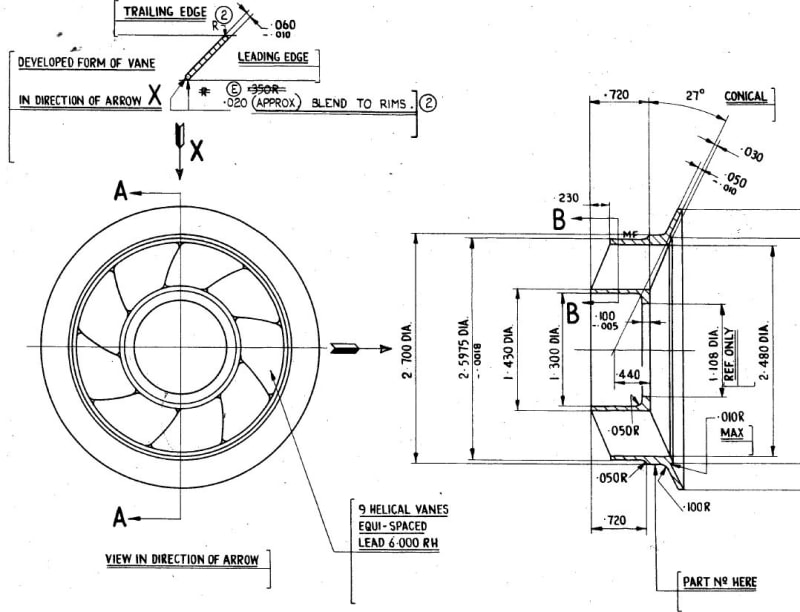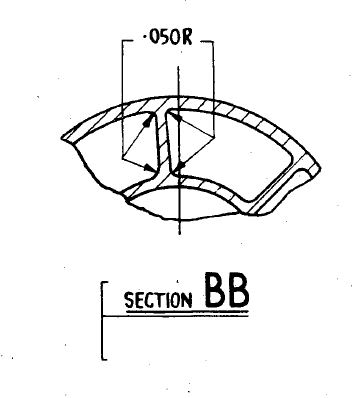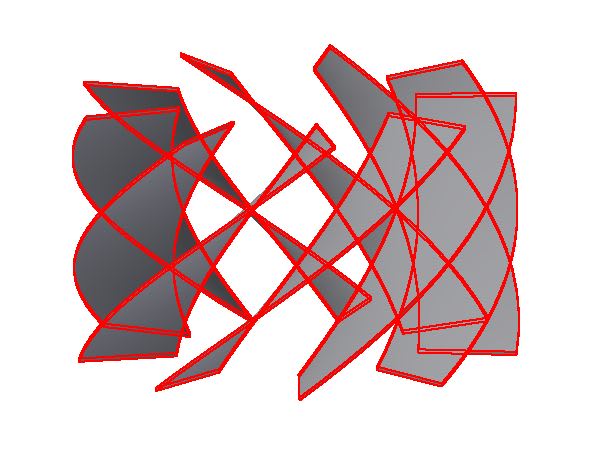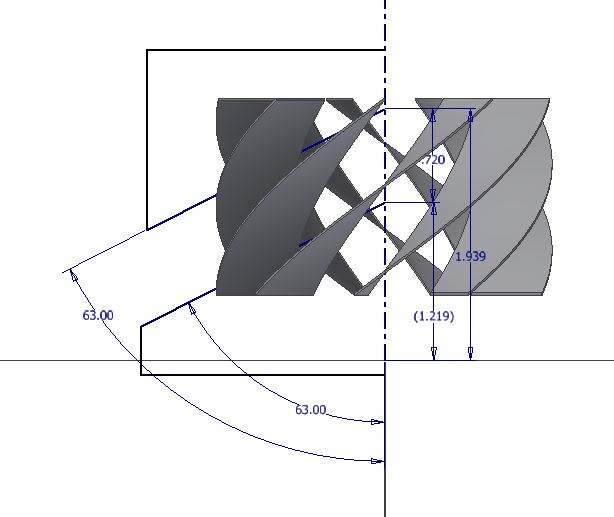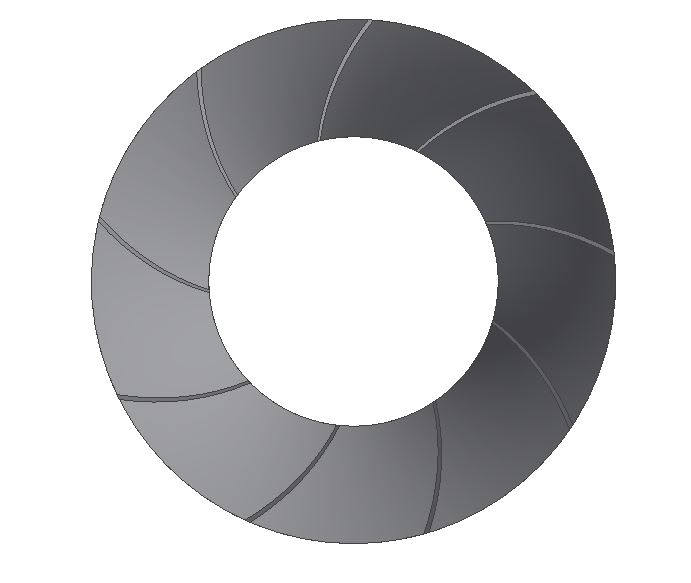To show what I mean, with visuals generated in my 3d solid modelling program:
Here is an image of 9 developed screw flights: a horizontal rectangular shape swept through about 1/4 revolution on a 6.000 pitch helical path, and then circular patterned 9 times.
Next, I trimmed those flights with two triangular sections, making revolved cuts around the helix centerline, at 27 degrees to horizontal, or 63 degrees relative to the rotation axis of the helix, using the sketch shown below:
The result looks pretty close to what is shown in the drawings, see the end view of the trimmed impeller below (I have not modeled the i.d. and o.d. cylindrical surfaces nor the end conical flare):
It probably needs to be tweaked to get the vane section to the correct thickness. There will likely also be issues with how the "blend radii" at the i.d. and o.d. walls is accomplished in CAD, but then that's always the way it seems. Also, I didn't address Mint's concern about the side view of the developed vane, but would assume a horizontal section cut through a single vane would create a view similar to the drawing...or maybe not. Either way, I've wasted enough time and have other things to do now, and already deleted the cad file.
